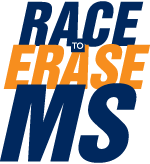The History of MS: We’ve Come a Long Way
by Meagan Freeman
What is your New Year’s resolution? Mine is to reach out and try to help
as many MS patients as possible. When we think about New Year’s Day, certain images come to mind: Renewal, refreshment, starting again, a clean slate. This is our opportunity to create goals and plans for our next year of life. I see this time of year as an opportunity to reset the mind and gain clarity. Sometimes, the best way to gain perspective about the future is to look to the past.
Let’s consider how far we have come in the Race to Erase MS:
Tracing back to the middle ages, we see descriptions of patients who likely had MS. There are written logs from this era describing neurological conditions with numbness, weakness, and paralysis in otherwise young and healthy individuals. Of course, at that time there was no definitive diagnosis, and obviously no treatments.
1838: The earliest medical drawings and descriptions show patterns of illness that we now recognize as MS. The name of the illness had not been described as of yet, but physicians were making astute observations about this illness.
1868: Dr. Jean-Martin Charcot from the University of Paris (later termed the “father of neurology,” described a female patient with MS symptoms. She had slurred speech, visual problems, and tremor/weakness. After her death, she was determined to have multiple scarred areas of the brain, or plaques. We now recognize this as MS. Dr. Charcot could not determine the cause, and was unable to create any effective treatment for these patients. He tried injections of gold and silver, and the use of several poisons (these were common treatments at the time) for these patients with no effect!
1873: MS was recognized in England by Dr. Walter Moxon, and in the United States by Dr. Edward Seguin in 1878.
1906: the Nobel Prize for Medicine was awarded to Dr. Camillo Golgi and Dr. Santiago Ramon y Cajal . These physicians were able to finally observe individual nerve cells under a microscope and see the specific damage caused by MS.
1916: Dr. James Dawson at the University of Edinburgh described that myelin was the target of MS attacks, and observed the inflammation in the brain leading to damage.
1940: The animal model of MS (EAE) was discovered, and this led to the ability to study treatments in mice.
1946: The National Multiple Sclerosis Society was formed, and major research grants led to worldwide studies on MS.
1960: The immune system, specifically white blood cells, are implicated in the attack on myelin with MS
1970: The concept of using synthetic myelin to “fool” the immune system into stopping the attacks was born. This led to the development of Copaxone later.
1980s: The CT scan was refined and used to develop a new method of imaging known as MRI, in order to image the brain with MS.
1990: Genetics and MS were further studied, leading to a study of a genetic predisposition.
1993: Betaseron, the first interferon drug was introduced, followed by Avonex and Rebif, and Copaxone. We now had multiple treatments for MS.
2014: We now have 12 disease modifying drugs for MS, and many more on the way!
For 155 years, since the disease was first described by modern medicine, there were no treatments available at all. In two decades, from 1993 – 2013, MS went from an untreatable illness to one that can be managed more successfully with 12 disease modifying medications, several being oral drugs instead of injections. Hope is growing, advances are being made daily, and newly diagnosed MS patients today have more promise for a normal life than ever before. We are still waiting for the ultimate cure, but we should take a moment to appreciate how far we have come, how much progress has been made, and how much more awaits us. MS has gone from being shameful and secretive, to something we can openly discuss in support groups, both online and in person.
The internet has made accurate information and support more available and more easily accessible to every MS patient, regardless of ability to pay. Drug assistance programs made available by all major drug manufacturers have given every patient the opportunity to be treated. When my grandmother was diagnosed with MS in the 1960s, she was told to “get in bed and stay there.” We now know that this is the worst possible advice, and that physical activity is key to remaining healthy with MS. We now recognize that emotional changes are common with MS, and we can seek help for these conditions without shame.
More focus has shifted to lifestyle changes such as exercise, diet, and stress reduction. We now realize how much impact these simple changes can have on our disease progression and emotional state.
If you begin to lose hope, and you feel that your situation is bleak, try taking a look back at how far we have come. Before 1993, this disease was considered untreatable. If we have come this far since 1993, imagine how far we will go in the next 20 years! Research is continuous, and through fundraising efforts such as the Race to Erase MS, we will find the cure that has been sought since the middle ages. Have faith, have hope, and stay strong in this new year. We have come a long way, don’t you agree?

Meagan Freeman was diagnosed with RRMS in 2009, at the age of 34. She is a Family Nurse Practitioner in Northern California, and is raising her 6 children (ranging from 6 – 17 years of age) with her husband, Wayne. She has been involved in healthcare since the age of 19, working as an Emergency Medical Technician, an Emergency Room RN, and now a Nurse Practitioner. Writing has always been her passion, and she is now able to spend more time blogging and raising MS awareness. Please visit her at: motherhoodandmultiplesclerosis.blogspot.com.
Information Reference: The National MS Society, History of MS:
http://www.nationalmssociety.org/NationalMSSociety/media/MSNationalFiles/Brochures/Brochure-History-of-Multiple-Sclerosis.pdf.

